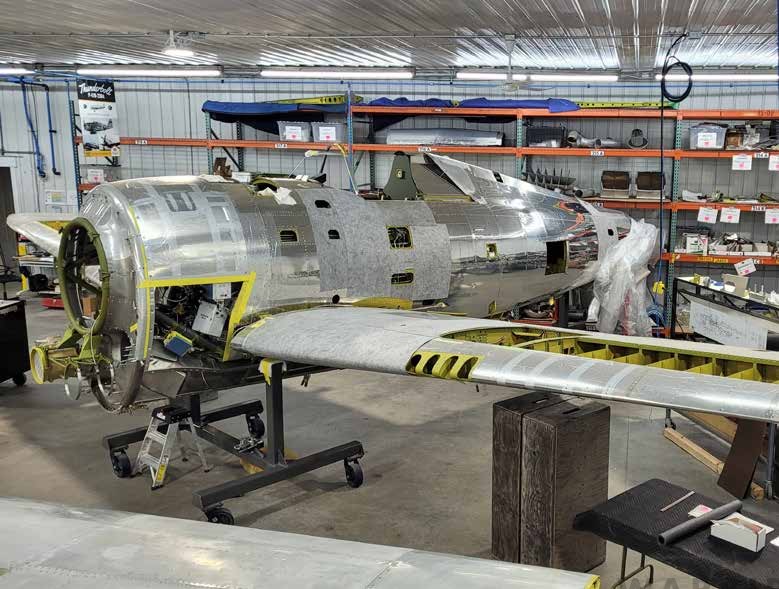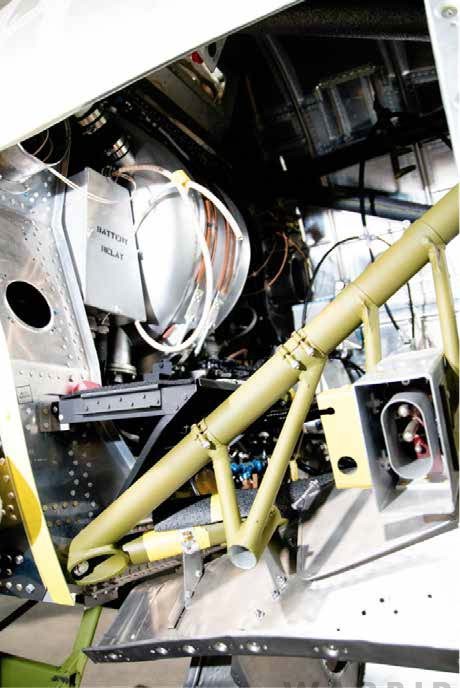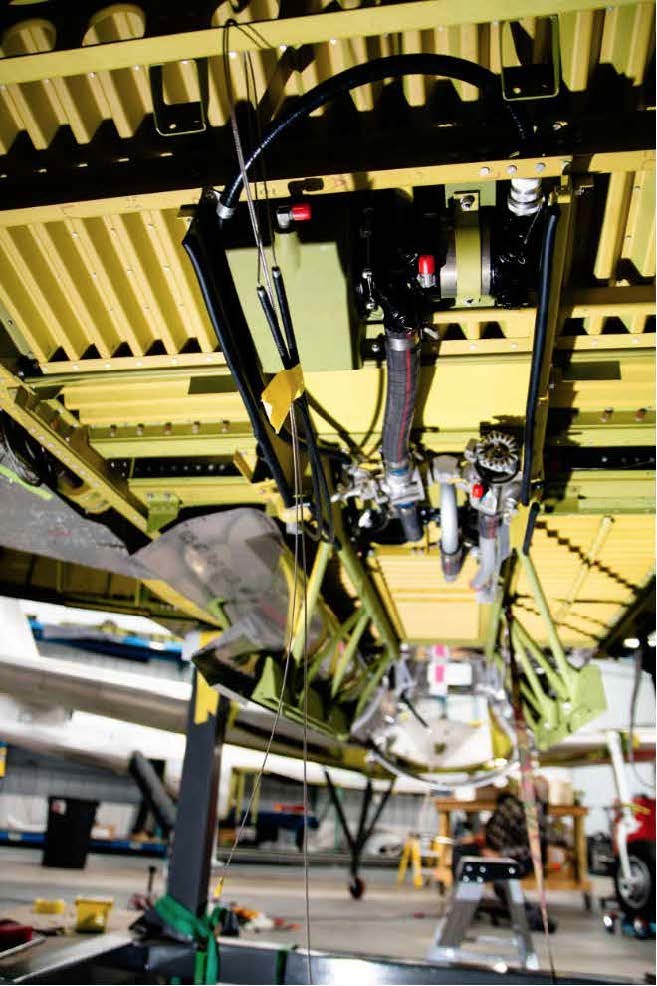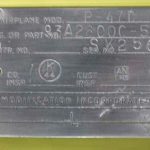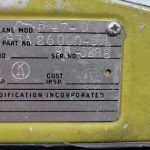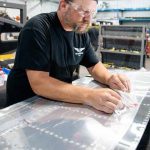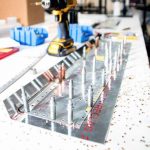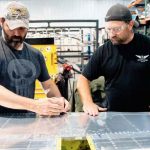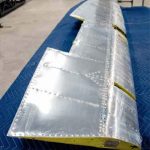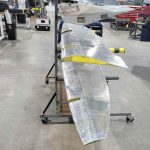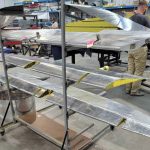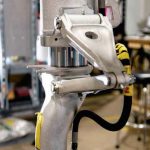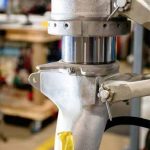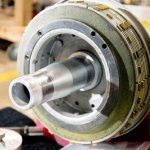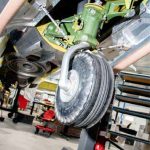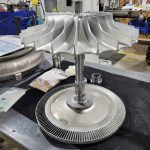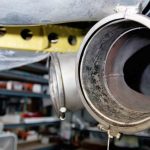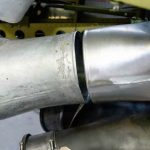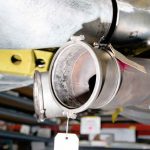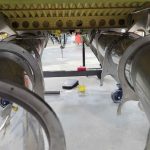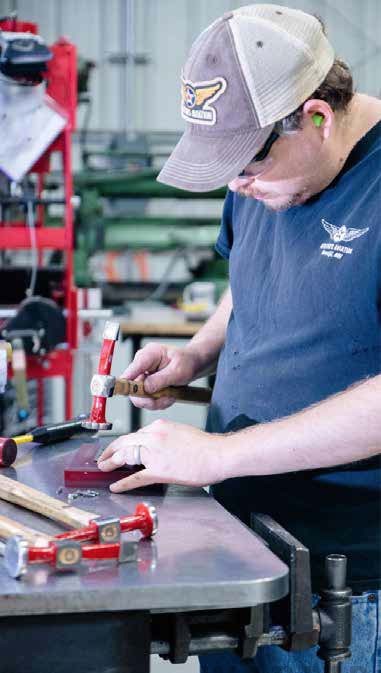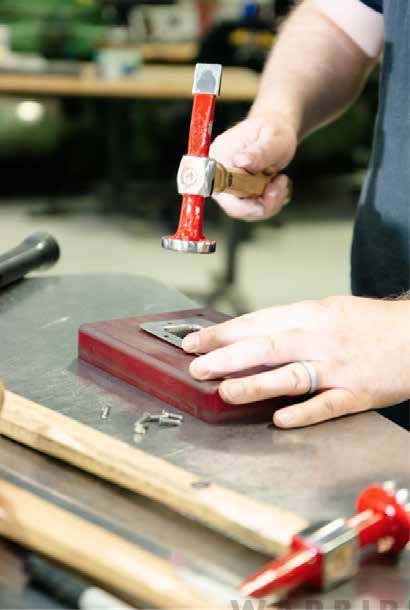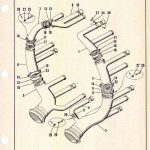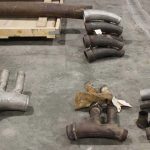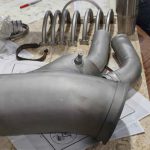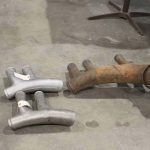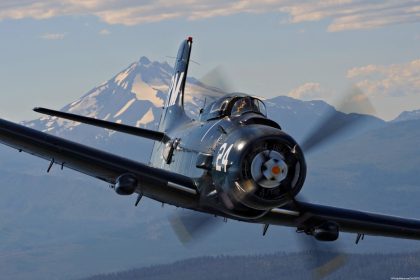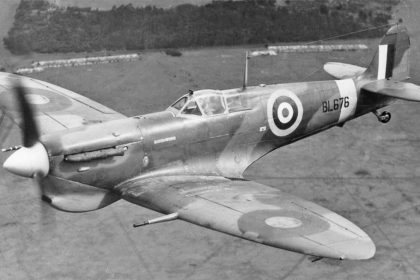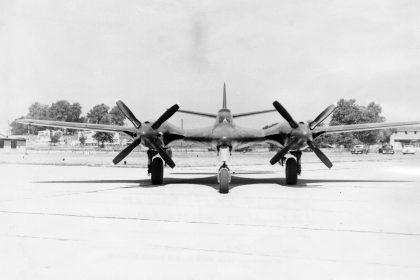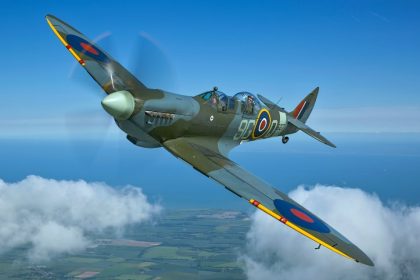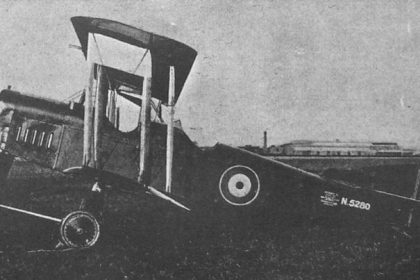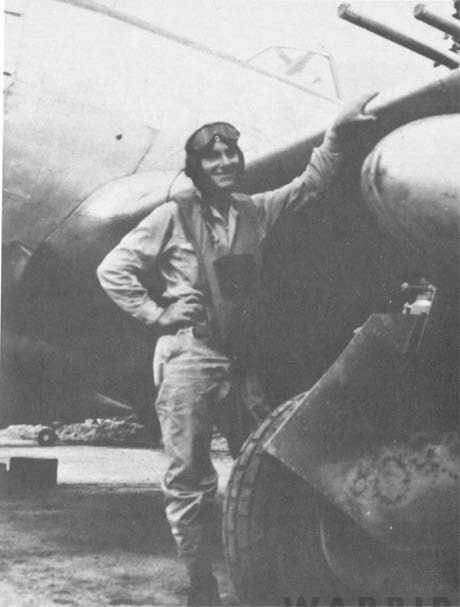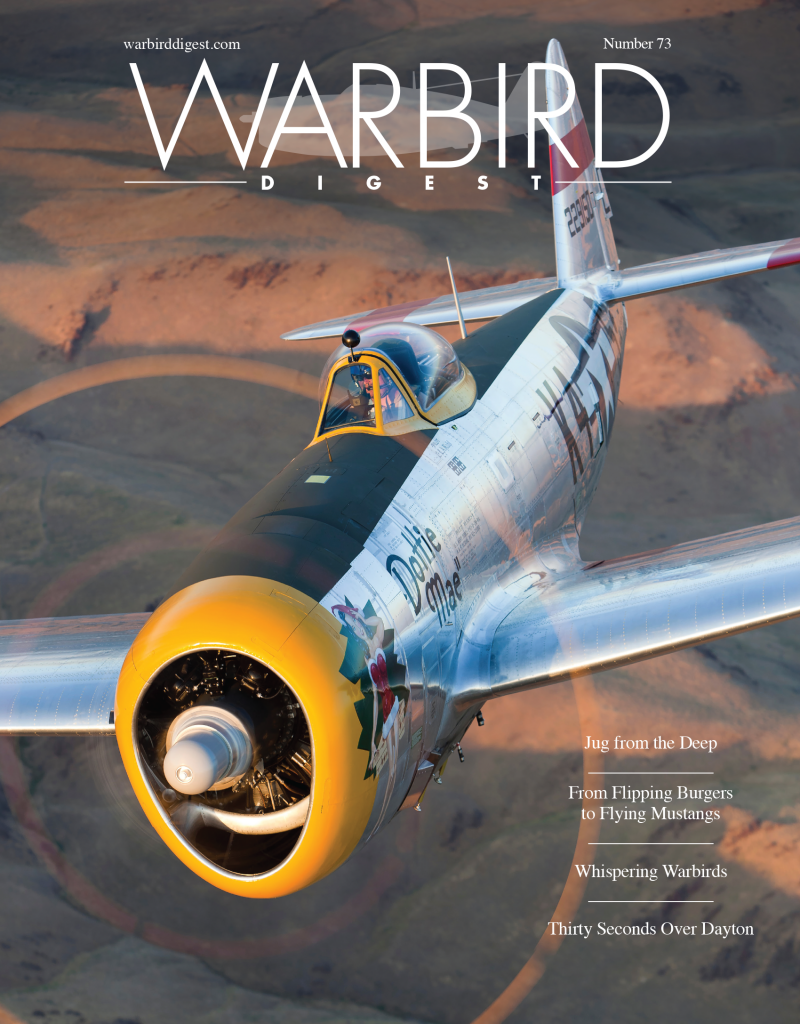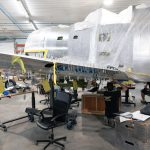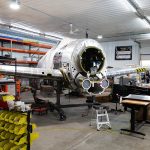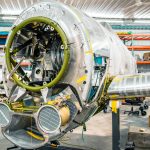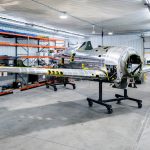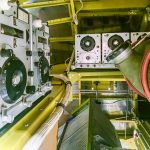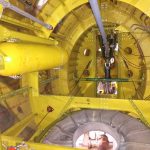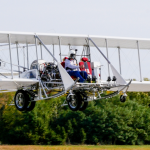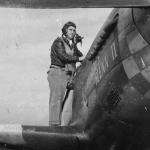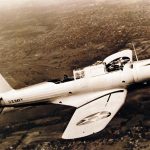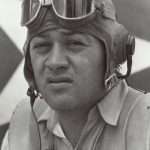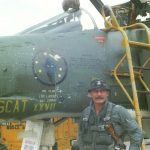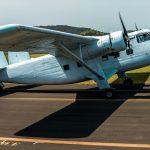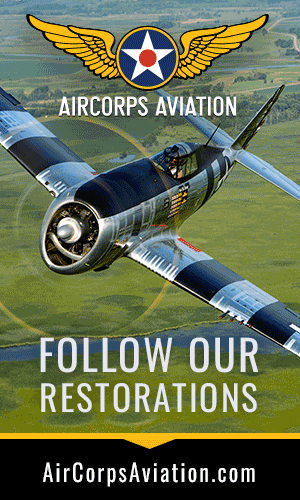Warbird Digest has received the July/August, 2021 report from Chuck Cravens concerning the restoration of the Dakota Territory Air Museum’s P-47D Thunderbolt 42-27609 at AirCorps Aviation in Bemidji, Minnesota. We thought our readers would be very interested to see how the project has progressed since our last article on this important project. So without further ado, here it goes!
Update
This month, work continued on fuselage systems, the ailerons underwent riveting, and work also began on the exhaust system. Some of the ducting for the turbosupercharger was fitted in conjunction with the exhaust system.
Fuselage
Systems work continues on the fuselage.
(image via AirCorps Aviation)
<wbn_ads_google_one]
Ailerons
In any restoration, the various assemblies are first temporarily assembled using clecos. Skins are then fitted to allow the precise drilling of attachment holes, and then the assembly is taken apart so individual components can undergo hole de-burring, painting, and any other needed adjustments. Once the latter is achieved, then everything can be permanently riveted together to complete the component. This month, it is the ailerons which have reached the final-riveting stage.
Landing Gear
A P-47’s landing gear is massive, as befitting for such a large fighter. We can report now that most of the restoration work to refurbish our Thunderbolt’s gear is complete.
Turbosupercharger System
<wbn_ads_google_one]
Small Parts Fabrication
Even at this stage of the restoration, small parts are still undergoing fabrication; one example being the cover for the gun bay heat baffle.
Exhaust System
There are so many complex systems on the P-47, the aircraft’s exhaust system is no exception. The engine exhaust gasses have to flow back through the turbosupercharger to power that assembly (giving the engine denser air) before they are finally expelled from the airframe.
35th Fighter Group, 39th Squadron During the Service Period for 42-27609
42-27609 was operational in the Papua New Guinea combat area from late May until the first days of September 1944.
The 35th Fighter Group received their first P-47D-23RAs in late June. Indeed, this unit was the first Fighter Group to list the D-23 in their squadron history inventory pages. The 35th experienced relatively little combat during June and July of 1944, but the mission rate increased greatly as August began.
“On June 25th, seven new P-47D-23RAs arrived from Finschaven. Seven more were added two days later, but no missions were flown until August 3rd, when glide bombing was introduced against Japanese positions on Noemfoor Island and the Vogelkop Peninsula. For the first time, 500 pound bombs were used on the underwing shackles, doubling the P-47’s offensive load.”1
42-27609 was very possibly one of those first 27 D-23s.
The 39th Fighter Squadron experienced a change in command during this period. Major Harris Denton turned the squadron over to Major Richard Cella. The first mission Major Cella commanded was a 900 mile flight with 26 P-47s from Nadzab to Noemfoor to cover the building of airfields on Middleburg Island. Over the next 6 weeks, the 39th guarded against the occasional raiding of Japanese soldiers during their tenure on the island.
On August 9th, their first operation from Noemfoor took place as two flights of P-47s covered a convoy off Cape Sansapor. Similar missions filled the next few days until August 20th when Captain Gordon Prentice led the squadron on a fighter sweep to the Moluccas: “With a flight duration of 5 hours and 20 minutes, it was the longest P-47 mission flown by the 39th (and probably any other Fifth Fighter Command unit) up to that date. No longer would the skeptics berate the P-47’s range. Later in the year, with three external tanks and a technique of controlling their cruising speed with propeller pitch, as demonstrated by Charles Lindbergh, the squadron registered missions up to eight hours.”2
The 39th and the rest of the 35th Fighter Group had moved 900 miles west during this time. The next big jump would be to the Philippine Islands later in 1944.
1 John Stanaway, Cobra in the Clouds, Historical Aviation Album 1982, Temple City, CA, p.28
2 John Stanaway, Cobra in the Clouds, Historical Aviation Album 1982, Temple City, CA, p.29
On August 23rd, 1944, the squadron sustained its first operational combat fatality, when First Lieutenant Billy Richards went down due to enemy anti-aircraft fire over Jefman. Lt. Richards was flying P-47D-23RA 42-27620 when he died, a P-47 only 11 places later on the Evansville production line to our restoration airframe; both airframes arrived in Townsville, Australia on the same day, and each journeyed to the South West Pacific aboard the escort carrier USS Prince William (CVE 31).
On September 5th, the group performed a glide bombing operation against Halmahera; the P-47s made the 800 mile roundtrip with no difficulty and all returned safely with fuel to spare.
Air operations were halted briefly while the 39th began a move from Owi to Morotai on September 12th, the ground contingent arriving by ship four days later.
42-27609 was abandoned at Dobodura on September 18, 1944.
3 John Stanaway, Cobra in the Clouds, Historical Aviation Album 1982, Temple City, CA, p.29
And that’s all for this month. We wish to thank AirCorps Aviation, Chuck Cravens for making this report possible! We look forwards to bringing more restoration reports on progress with this rare machine in the coming months. Be safe, and be well







